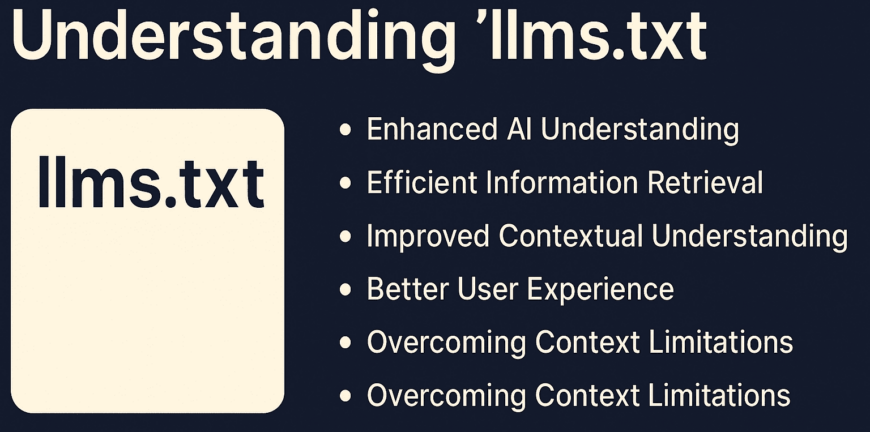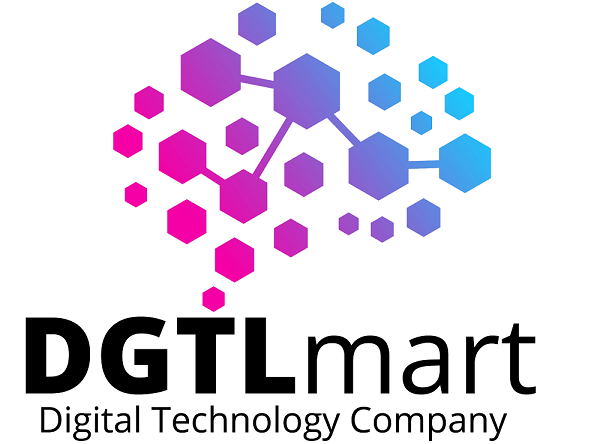
A Complete Guide to llms.txt: Everything You Need to Know about llms.txt
As large language models (LLMs) become deeply embedded in modern websites, apps, and digital platforms, the need for transparency in AI usage is more crucial than ever. Enter llms.txt — a simple yet powerful file designed to disclose how AI models are being used on your digital property.
In this complete guide, you’ll learn what llms.txt is, why it matters, how to structure it, and how to implement it effectively.
Introducing llmstxt.org
To encourage widespread adoption, llmstxt.org has been launched as the official hub for the llms.txt initiative. This platform offers:
- Detailed documentation on creating and structuring llms.txt
- Easy-to-use templates for quick setup
- Real-world examples from active websites
- Best practices for ethical and transparent AI implementation
- Tips to ensure compliance with regulations like the EU AI Act
The project is open-source and community-driven, making it easier for developers, businesses, and regulators to adopt standardized AI disclosure practices.
As a leader in ethical AI integration, DGTLmart supports the llms.txt initiative to promote responsible AI use across digital platforms.
What is llms.txt?
llms.txt is a plain text file hosted at the root of a domain (e.g., https://yourdomain.com/llms.txt). Modeled after robots.txt, it allows organizations to publicly share information about the LLMs they use—what they’re used for, who provides them, and how user data is handled.
It supports the growing call for transparency in AI usage, especially in light of increasing regulatory oversight.
Why Use llms.txt?
As powerful generative AI models like GPT-4, Claude, and Gemini are integrated into more digital services, it’s important to:
- Use AI ethically
- Disclose AI-generated content
- Respect user privacy
- Build trust with your audience
- Comply with AI regulations
DGTLmart encourages the use of llms.txt for organizations looking to maintain AI compliance and transparency at every touchpoint.
llms.txt makes all of this easier by offering a simple, standardized disclosure format.
Where Should You Place It?
The llms.txt file must be hosted at:
https://yourwebsite.com/llms.txt
Placing it in the root directory ensures easy access for users, crawlers, and compliance auditors.
Sample llms.txt Format
- plaintext
- CopyEdit
- # llms.txt – AI Transparency Statement
- model: GPT-4
- provider: OpenAI
- usage: Customer support, blog content creation
- data_retention: No user data stored
- fine_tuned: No
- contact: ai@example.com
- last_updated: 2025-04-10
- model: Claude 3
- provider: Anthropic
- usage: Internal documentation summaries
- data_retention: Deleted after processing
- fine_tuned: Yes (on proprietary content)
- contact: ai@example.com
- last_updated: 2025-04-10
Recommended Fields
Field | Description |
model | The name of the LLM used (e.g., GPT-4, Claude 3) |
provider | The provider or developer of the model |
usage | Description of how the model is used on your site |
data_retention | Whether user data is stored and how it’s handled |
fine_tuned | Indicates if the model has been customized or fine-tuned |
contact | An email address for AI-related inquiries |
last_updated | Last update date of the file |
Benefits of llms.txt
- Transparency: Clearly communicates AI practices to users
- Trust: Builds credibility with your audience
- Compliance: Helps meet legal and ethical standards
- Standardization: Aligns your site with global AI best practices
DGTLmart integrates llms.txt as part of its ethical AI and SEO services, ensuring clients stay ahead of regulatory and trust-building standards.
Who Should Use llms.txt?
llms.txt is beneficial for any website or platform using AI models, including:
- SaaS tools with AI chatbots
- E-commerce platforms using AI for recommendations
- News or content sites that publish AI-generated articles
- EdTech platforms offering AI-powered tutors
- Enterprises deploying AI to serve customers or internal teams
DGTLmart recommends llms.txt to all clients leveraging LLMs to promote transparency and compliance.
How to Set It Up
- Create a plain text file named llms.txt
- Include entries for every AI model in use
- Upload it to the root directory of your website
- Regularly update the file as your AI usage evolves
Future Potential of llms.txt
The llms.txt format may evolve to include:
- JSON versions for machine-readable compliance
- Integration with AI auditing tools
- Discovery mechanisms for web crawlers
- Legal mandates for public AI disclosures
Though it’s just a simple text file, llms.txt is a giant step toward ethical AI use and public transparency. It showcases a proactive approach to accountability in a world increasingly powered by artificial intelligence.
Whether you’re a startup or an enterprise, maintaining a clear and updated llms.txt file on your site is a small but meaningful move toward responsible AI. DGTLmart is here to help you implement it the right way.
